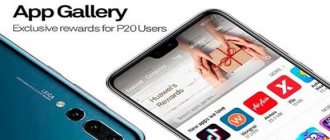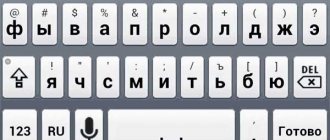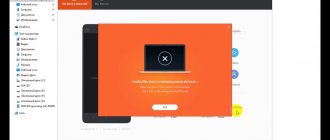Huawei Beam is a new feature in Android phones. It is designed for fast and secure file transfer over short distances. Compared with the NFC radio module and Bluetooth technology, Huawei Bin received all the best from them. However, in 2021, not all phones have it. Owners of those gadgets on which Bim is built-in do not always know how to use it. Therefore, we will tell you in more detail about the option and its scope.
What is Huawei Beam?
Android Beam is a technology that beams content from one Android to another over a relatively short distance. It will be clearer if you compare it with already known functions:
- through the NFS, information is transmitted at a distance of 5-7 centimeters;
- Bluetooth produces a powerful signal and transfers “heavy” files, but due to it, even a text document takes a long time to transfer;
- Beam - transmits quickly, in the range of several centimeters, and loads elements with a large volume well.
As the developers say, in fact they tried to combine two older technologies and bring out the maximum useful effect from them. What sets Beam apart from its predecessors is that modern tuning does not need to be turned on, adjusted or turned off. Everything happens automatically.
What is Android Beam
The function has been present on mobile devices with NFC since 2011, but not all users today know what Android Beam is in a smartphone and are often not even aware of the presence of such a feature.
Android Beam enables wireless transmission over short distances from one device to another. Essentially, this is software that optimizes the use of NFC and allows the technology to be used not only for mobile payments and identification systems, but also for transferring content between devices. Thus, Android Beam uses Bluetooth to send data, and the user does not need to activate the module, since the software performs this task automatically, and the function uses NFC to create a connection, which ensures both instant connection and fast transfer. After sending information, Bluetooth is automatically deactivated, so this method of exchanging files does not significantly consume the battery power of the device. Thus, Android Beam uses two wireless data transmission technologies at once, using the best qualities of each of them.
The feature was first introduced in Android 4.0 Ice Cream Sandwich on the Galaxy Nexus smartphone, released at the end of 2011 and a collaboration between Google and Samsung.
How to find out if your smartphone has Android Beam?
This feature is now being implemented on many modern phones. Android Beam also receives an updated shell for older versions of the system. This feature has been available since Android 4.4. To check its availability on a specific model, go to the “Data Transfer” settings. Click "Show more" at the bottom of the list, and make sure there is NFC.
What is the Tips application on Huawei and Honor - how to disable it?
Then go to “Connected devices” and view their list. If there is an item called Huawei Bim, then the technology is used on your gadget.
Let's sum it up
Android Beam is perhaps one of the most underrated features of the green robot. It has been present on smartphones with NFC since 2011, but many users still do not understand the benefits of it - and continue to “do magic” with cloud storage and email accounts when transferring data. Android Beam is a unique combination of Bluetooth and NFC that allows you to “transfer” a file from one smartphone to another in just a second. On phones without NFC, alas, there is no similar option - “mere mortals” have to make do with “blue tooth”.
How to use Huawei Beam
The issue of operation also raises many questions. We will tell you step by step how and where to use Huawei Bim:
- this technology transmits/receives links, videos, contacts, etc. over a short distance;
- to use, enable the NFS module;
- place the recipient and sender's devices close to each other;
- after 2-3 seconds, a notification about acceptance of the content will appear on the recipient’s screen;
- confirm the action.
Necessary conditions for payment
Let's look at how payment terms differ for different devices and operating systems.
Android Pay
On the Android platform, NFC technology became operational in May 2021, but even today not all devices are compatible with the function. The necessary conditions:
- OS version KitKat4 and higher;
- availability of NFC, check information about technology support in “Settings” or in the description of the smartphone.
In addition, you should disable the Knox service on your smartphone, which is responsible for protecting the phone from attacks by viruses or hackers.
Samsung Pay
For Samsung, the conditions are the same as for other devices on the Android platform. On phones that have been reflashed or contain unlicensed extensions, the technology may not work.
Apple Pay
To make wireless payments on iPhones, the user must be identified using Face ID, Touch ID or a password. Otherwise, the principle of operation is the same as on all other devices. Complete the security check, enter your card details and confirm your acceptance of the User Agreement.
Subtleties
For Android Beam to work, both devices' screens must be turned on and unlocked. In addition, if the transfer is from or to a tablet, then you need to approximately determine where its NFC module is located. On the Nexus 7 it is located at the top of the case, and on the Nexus 10 the module will probably be detected near the camera on the rear panel. This is not so important for smartphones, since the size of the devices allows the NFC modules to find each other in any relative position - just bring the devices with their back covers towards each other.
Samsung has its own Beam called S Beam. It is important to note that it is not compatible with Android Beam, but Samsung devices also support Android Beam, so when communicating Google-Samsung you need to use Android Beam, while Samsung-Samsung will understand each other both through Android Beam and through S Beam.
The combination “NFC” (Near field communication) is increasingly found in the specifications of modern smartphones and tablets. In this article we will try to consider this interface from the point of view of practical use, so that readers can independently draw their own conclusion about the need to have it on their phone.
In testing, we used two smartphone models that have already been reviewed in detail on our resource: Acer CloudMobile S500 and Sony Xperia acro S. We would also like to point out that most of the information, including the programs and use cases described, will only apply to Android smartphones. It is this operating system that is today the most “friendly” when it comes to working with NFC.
Introduction
At first glance, it may seem that numerous wireless interfaces today already cover all possible popular tasks and scenarios, so another option is simply not needed. However, if you look at the development of modern technologies, you will notice that more and more attention is being paid to energy consumption issues, especially when it comes to mobile devices. In particular, version 4.0 of the well-known family of Bluetooth protocols is precisely aimed at reducing battery costs. The second point worth mentioning is that not every task requires a long range. It happens even the other way around - you want to explicitly limit the distance between interacting devices. In addition to the obvious reduction in consumption, this also affects safety. And a similar remark can be made about the volume of transmitted data. So the idea of a slow wireless interface that operates over short distances and is characterized by low power consumption has a right to exist.
The starting point in the history of NFC development can be taken in 2004, when Nokia, Philips and Sony announced the creation of a touch-based interface for the interaction of various devices with the aim of developing and standardizing the interface between various devices. However, the first versions of the specifications were created a little earlier. Perhaps, by modern standards, the technology can be considered very young (if you do not take into account the history of RFID), but it is already quite often found in real products and services. In particular, at the Mobile World Congress 2013 held at the end of February, many stands and demonstrations were devoted to this topic.
This sign can be found on devices with NFC technology
The formal characteristics of the interface are as follows: operation at a distance of several centimeters, maximum information exchange rate of about 400 Kbps, full-duplex data exchange is supported, operating frequency is 13.56 MHz, connection establishment time does not exceed 0.1 s, operating mode is point-to-point. It can be seen that these parameters radically distinguish NFC from other popular wireless interfaces.
If we talk about devices, then in addition to active controllers in NFC, there are also passive options (they are usually called tags), which receive power wirelessly from the active controller. One example is modern cards for travel on public transport. Tags are simply data storage, usually less than 4 KB in size. Most often, they only provide read mode, but there are also options with write support.
One of the simplest options for a passive NFC tag
The compact size of the controller and its low consumption allows NFC to be implemented even in such small designs as SIM cards or microSD memory cards. However, for full operation it is necessary to use a special antenna. In phones it is usually located on the back of the battery compartment cover or built into the back panel if the device does not have a removable battery.
The NFC antenna is often placed on the back cover of the smartphone
The short range can have a negative impact when using tablets - finding the right place to “position” may not be as easy as we would like. To solve this problem, some manufacturers mark the location of the antenna with a special sign. As for the range, in our case the connection worked at a distance of no more than four centimeters - both between phones and with a passive tag.
From a security point of view, the developers did not implement elements of protection against interception and relay attacks. This of course makes it difficult to implement secure solutions, since it requires the applications themselves to be protected at a higher level. Note that in fact, such a well-known protocol as TCP/IP behaves similarly. So from a practical point of view, losing a phone without additional protection with customized payment system programs seems more dangerous than intercepting communications.
Perhaps the most important thing to know about NFC today is that the interface itself does not provide any real practical use cases or solutions. Unlike, for example, Bluetooth, whose profiles clearly describe how to transfer a file, how to connect a headset or provide network access, NFC is only a base, and direct operating scenarios are provided by additional software that works through it. On the one hand, this opens up great opportunities for developers, but on the other hand, it is a problem for them when ensuring the interaction of different applications and devices.
Interestingly, any programs installed on a smartphone or tablet can register in the operating system as NFC-related event handlers, and then when called externally, you will see a standard menu “What do you want to do with this action?” Since some NFC use cases involve convenient automation of actions, it is advisable not to overload the device with such utilities.
The NFC Forum tries to help with this uncertainty by proposing standardization of protocols for certain scenarios (notably NDEF for storing short messages on tags and SNEP (Simple NDEF Exchange Protocol) for exchanging information between devices), but practically determining the compatibility of specific devices is usually hampered by a lack of detailed information from the manufacturer and diagnostic tools. Another assistant here is Google, which has offered its own development of Android Beam in the latest versions of Android. It allows you to exchange certain types of information between compatible devices.
Android Beam
First, you need to make sure that both devices have NFC enabled, Android Beam active, and their screens are unlocked. On the models we tested, NFC only works if the screen is on and the device is fully unlocked. But perhaps other devices will use a different algorithm. In any case, the active interface requires very little battery power to operate, and so far the described approach seems quite reasonable. One option to simplify your work is to disable the lock screen. In this case, to identify the tag, it will be enough to simply turn on the smartphone. Another inconvenience is the need to confirm the operation by touching the screen after the devices find each other. This is not always easy to do without disrupting communication, especially when both devices are in the hands of two different people.
The next step is to select one of the applications on the device from which you plan to transfer. In particular, these may be:
- Google Chrome - transfer the current open link;
- YouTube client - transfer of a video clip (as a link);
- Google Maps - transfer of a place or route;
- Contacts—transfer a contact card;
- Google Play - application transfer;
- Gallery - transfer of photos.
Next, bring the devices closer to each other. When a partner is detected, you will hear a tone on the sending device and the desktop image will shrink. At this moment, you need to touch the screen image and hold your finger until you hear the second signal - about a successful transfer.
We tried the options listed, and almost all of them really work. Even the fact that our devices were produced by different manufacturers did not prevent them from finding a common language. But a few comments are still worth making. There are no problems with routes in Google Maps, but the option with a place is not very interesting, since only the current map display is transmitted. The dot marked on the screen of the original phone does not reach the recipient. The situation can be corrected by using the Addresses application, which transmits data correctly. When sending contacts, the photo is lost, since from a technical point of view the transfer format corresponds to vcf text files. If we talk about applications, then you can send not only those installed on the phone, but also simply open cards on Google Play. Books and other content from the store are similarly supported. Naturally, we are talking about transferring links, and not the downloaded or, especially, purchased elements themselves. There was a problem with sending photos: the Sony device was unable to work with this type of data. The official wording is “The recipient's device does not support large data transfers via Android Beam.” Here is the first sign that the interface is young or that the technical specifications of the devices are insufficiently detailed. Formally, we have both NFC and Android Beam in two devices, but in practice their real capabilities differ significantly, and this can only be found out by checking. What can we say about less famous manufacturers - their version of implementing this technology can be completely unpredictable.
By the way, regarding the work of Android Beam itself. The description of the technology indicates that data transmission uses Bluetooth communication after initial coordination of settings via NFC. Considering that all working formats required a really small amount of transferred data, NFC speed was quite enough for them, but for photographs it would have been clearly not enough. So we can assume that Sony has not implemented the switch to a faster interface. It is not possible to understand whether this problem is software (remember that this device has Android 4.0.4 installed) or hardware.
We also tried to send our own music and videos in the same way from their respective apps, but nothing appeared on the receiver.
Reading and writing tags
The described Android Beam uses the ability to transmit and process short information messages. However, in reality, they can not only be transmitted from the phone, but also read from passive tags. In some ways, this technology is similar to the well-known QR codes that are read by a phone camera. At the same time, useful information (for example, a link to a website page) takes up literally several tens of bytes. Tags can be used by companies, for example, to promote their products or services. Considering the compact size of the passive tag (more precisely, its thickness is comparable to a sheet of paper - due to the antenna, the area will still be significant, no less than a five-ruble coin), it can be placed almost anywhere: on a box with a product, in a magazine, on an information sheet. counter and other places.
Passive NFC tags can be manufactured as key fobs
If we talk about making tags with our own hands, then this is a completely feasible scenario. To do this, you need to purchase clean blanks and use a special program for your phone to write down the required information on them. As an example, we bought several different options: a sticker of minimal thickness, a protected plastic circle and keychains. All of them had a very small amount of memory - only 144 bytes (there are also 4 KB options on the market). The number of rewrite cycles was not specified, but for most application scenarios this parameter is not critical. To work with tags, we can recommend NXP Semiconductors programs - TagInfo and TagWriter.
The first will allow you to read data from the tag and decrypt information according to the NDEF standard, and the second will help you create your own tags. Several NDEF sub-options are supported: contact, link, text, SMS, mail message, phone number, Bluetooth connection, geographic location, local file link, application launch, URI. Please note that when creating a record, you need to take into account the amount of data stored. For example, a contact photo can take up several kilobytes, messages or text can also easily exceed 144 bytes. By the way, the NFC TagInfo program from NFC Research Lab with a special plugin can read and show you a color photo from a biometric passport. With a data volume of one and a half dozen kilobytes, reading them via NFC takes about 20 seconds. An additional level of protection in this case is provided by the need to specify some passport details to read data from the chip.
Note that automatic processing of read tags depends on the content. In particular, sometimes additional confirmation is required to carry out the action itself. For example, in the case of SMS, a completed message form opens, but the user must actually confirm the sending. But the recorded web link can immediately open in the browser. Any automation is associated with a loss of control, so the described capabilities should be used carefully, since by simply replacing or reprogramming tags, attackers can redirect you to a fake site instead of the original one. We did not find any standard OS settings to limit such autostart (unless you disable NFC itself).
Another important point when using tags in public places is protection against overwriting. When recording a tag, you can set a protection flag that will block all attempts to change the information, but it will no longer be possible to remove it. So the label will be used in read-only mode in the future. For home use, in most cases this is not very critical.
Let's mention a few more programs for recording tags:
Using ready-made tags to control the device
One of the active participants in the NFC implementation process is Sony. Its devices come pre-installed with the Smart Connect program, which supports working with original Sony tags. If you wish, using the SmartTag Maker utility, you can create them yourself from blank blanks. The system uses the NDEF URI format with encoding of the label number/color in the text link. In total, the system provides up to eight tags, which are designated as “home”, “office”, “car”, “bedroom”, “listen”, “play”, “activities”, “watch”.
Variant of original Sony SmartTags
The Smart Connect program itself works not only with NFC tags, but also with other devices connected to the phone, including headsets, power supply, and Bluetooth devices. It’s quite convenient that the standard settings already correspond well to the above scenarios. In this case, the user can reprogram all circuits; each of them specifies a set of conditions and actions.
As a condition, you can use tag identification or device connection, and you can additionally limit the operating time of the circuit. The set of actions is quite wide, it includes launching an application, opening a link in the browser, starting music, adjusting volume and mode, connecting a Bluetooth audio device, sending SMS, making a call, managing wireless interfaces, adjusting brightness and other actions. Moreover, they can also be assigned to exit this mode, which is carried out by repeated recognition of the tag, by a new event/tag, or by the expiration of a specified time interval.
But in fact, it is not necessary to use Sony branded tags - you can also find use for ready-made tags that do not allow information to be overwritten. For example, these could be used transport cards. The fact is that each of them has its own unique identifier, which can be tied to certain actions using special programs. Possible reactions may include operations such as changing the profile, enabling/disabling interfaces, and many others.
There are several utilities for this scenario in the Play Store, let's mention a couple of them:
Let us remind you that you should not install several similar programs at once. This mode will not add any convenience, since when a tag is detected on the phone screen, a dialog box will appear asking you to select a program to process it.
While searching for programs for working with tags, we also came across another class of utilities that may be interesting if you have recordable tags. These programs use their own original recording format, which only they can work with. In this case, the set of possible actions is almost no different from those described above:
Let us remind you that at the moment the tag can be read only when the device is unlocked. So the scenario “came home, put the phone on the nightstand - automatically switched the profile, turned off the call and Bluetooth, set the alarm” will require some actions from the user. This behavior still slightly limits the capabilities of programs.
Exchange information between devices
With the exception of Android Beam, the scenarios described above assume the operation of a single phone with a tag or a specialized terminal. If we talk about the direct connection of devices with each other, then the main issue here is compatibility. Of course, in the case of products from one manufacturer, especially a large one, that manufacturer has the opportunity to simply install the appropriate program in the firmware. But if the devices are produced by different manufacturers, everyone will have to use the same utilities. And it’s not at all a fact that your partner will have the same program installed as yours.
Considering that NFC's own speed is very low, Bluetooth or Wi-Fi is usually used to quickly transfer files, and NFC only works at the stage of negotiating connection parameters and establishing communication. To test this scenario, we tried several file transfer programs that claim to support NFC on our devices.
Send! File Transfer (NFC) in the free version allows you to exchange photo, music and video files. You can use NFC or QR codes to establish communication. The transfer is carried out via Bluetooth or Wi-Fi (if both devices have support for Wi-Fi Direct, which the Sony phone we used did not have). As a result, we were able to see a speed of 65 KB/s, which, of course, is too low even for photographs.
Blue NFC, as the name suggests, also simplifies file sharing over Bluetooth by replacing the power-on, search, and pairing steps with touch and NFC sharing. The speed of operation is not very high - at the level of the program mentioned above.
File Expert HD also uses Bluetooth, but the speed is already 100-200 KB/s. True, in fairness it is worth noting that this program has many other file sharing modes.
Conclusion
As of the spring of 2013, we can say that NFC technology already confidently occupies a place in modern high-end and mid-level smartphones. Interest in it can be indirectly assessed by the number of programs in the Play Store: there are already several hundred free projects alone. Considering the market dominance (especially in the number of models) of the Android platform, it is the most popular platform for NFC devices today. iOS does not provide standard tools for NFC, and Windows Phone 8 has significantly limited capabilities for working with NFC for third-party applications.
NFC technology itself has several features that allow it to occupy a unique position:
- contactless data transfer;
- work only over short distances;
- the ability to exchange information with other devices or passive tags;
- low cost solution;
- low power consumption;
- low data transfer speed.
Currently, for smartphones and tablets, there are three most relevant options for using NFC: exchanging data between devices (contacts, applications, links, photos and other files), reading tags with special information and changing device modes/settings/profiles, quick pairing with peripheral devices (such as headsets). In the first case, you can try working with the standard Android Beam program or install alternative options. They can be useful if you need high transfer speeds (via Wi-Fi), but require the same program on each device.
Passive tags can be used almost anywhere, from posters to magazines to product tags. They can record product information, a website link, Wi-Fi settings, contact information, geographic coordinates, or other small amount of data. The spread of this method of information exchange directly depends on the number of compatible devices users have. This scenario can be compared with common QR codes, which today are, perhaps, still simpler in terms of implementation and more popular.
To change system settings, you can use even non-recordable tags with some programs, so many users will be able to try this scenario. However, it should be noted that in this case the set of options will be recorded in a specific device, and transferring it to another device may be difficult. Most utilities for this purpose still require their own recorded tags, which allows them to store all the required information in encoded form directly in the tag (or cloud), so that to use these settings on another device, it will be enough to have the same program on it.
We did not consider in this article such NFC use cases as payment systems, electronic wallets and micropayments, tickets and coupons, transport cards and passes. These topics, especially the first, deserve separate consideration. We will try to return to them if there is reader interest and the spread of such solutions.
If you have a file like a photo, video or document on your Android phone that you want to share with someone else that happens to be physically next to you, there's a simple way to accomplish this task. It's called Android Beam, and the feature works pretty much as its title suggests.
With this simple tech, you can 'beam' files to your friends and family, though both phones are involved in the transfer must have NFC (Near-Field Communication) hardware for it to work.
Time to transfer files with Android Beam
Assuming both Android Beam and NFC are now set up on both phones, the transfer process for files can begin. All you and your friend have to do is to place those devices back to back against each other. Then you check out if the content you want to transfer to the other phone is on your screen. If it can be moved to the other phone, you should see a “Touch to Beam” caption on top.
Then all you have to do is just touch the screen and that content, such as a photo, video or word document, will quickly transfer from your phone to the other device, using NFC and a Bluetooth connection. You should get a confirmation sound if the transfer was completed successfully, and there will be a more negative sound if the transfer has failed for some reason.
Keep in mind that the transfer between the two devices is just one way; if your friend wants to move a piece of content to your phone, he or she must make their own Android Beam connection to your device and repeat the same steps you just did.
What to do if the connection is not supported
In the absence of NFS, the user can exchange data via:
- Bluetooth;
- Wi-Fi;
- Cloud storage;
- E-mail.
The presence of NFC depends on the chipset installed in the smartphone. Vendors can release several versions of the same model with and without technology. It depends on the market where the device is sold.
Android Beam combines 2 technologies that cover its own shortcomings with key advantages. Despite the ease of use, this option is designed for exchanging “light” files: contacts, pictures, links to content.
Data transfer
The technology uses NFC, which means Android Beam doesn't require an internet connection, meaning you can transfer files and content offline. You can also turn on Bluetooth, but this is not necessary as NFC connectivity is automatically turned on and off when data transfer is complete. Once NFC has been enabled, you should see the N logo in the status bar, signaling that everything is going according to plan.
Then you need to select the file, photo or any other content you want to share. It should be noted that some devices do not support transferring large files, such as movies or large libraries, through Beam.
So, open the file you want to transfer, place the two devices on top of each other, and make sure the screen is on on both phones. This will be followed by a vibration and you will see the words Tap to Beam on the device you are sending content from.
When you confirm the sending, notifications will appear on both devices about the transfer and reception of data. Once the content has downloaded, you can open it by tapping on the notification that appears.
So, we found out that Android Beam is a simple, fast and convenient way to transfer data to a nearby device.
span" // tag from which the product name is taken. You can use any CSS selector data-search-count=”3″ // number of offers in the block data-search-category-text=”Mobile phones” // product category, for search accuracy data-theme-id=”1a” > Share: Softnews ProstoTECH Android Q will add many new features, but it will also remove the old one - Android Beam. There's no native replacement on the horizon, but similar functionality can be achieved by apps (including Google Files). For those of you who don't remember, Beam is a peer-to-peer file transfer technology. It uses NFC to establish communications and Bluetooth to send data. Google Files app can share files over Wi-Fi
The Google Files app has the ability to share files locally via Wi-Fi. This promises speeds of up to 480 Mbps, significantly faster than Bluetooth. The initial connection is made via Bluetooth, similar to Apple AirDrop, and the transfer is encrypted using WPA2. Beam was first introduced back in 2011 with Android 4.0 Ice Cream Sandwich. That same year, Apple released AirDop with iOS 7, and Apple's technology seemed to find greater success. span" // tag from which the product name is taken. You can use any CSS selector data-search-count=”7″ // number of offers in the block data-search-category-text=”Mobile phones” // product category, for search accuracy data-theme-id=”1a” >SigComments commenting system
Telephones have long been more than just a means of conversation. We store contacts and addresses on our smartphones, take photographs, take notes and write articles, control our weight and select menus. It is not surprising that when purchasing a new phone, the issue of data synchronization arises. Transferring information between Apples is not difficult, because from the very beginning the company built a system with a single center. But Android resembles a mosaic of different applications. Therefore, many have difficulty transferring data between Androids.
- What is Bluetooth aptX, aptX HD, aptX LL, aptX Adaptive?
Conclusion
While there are plenty of other methods for phone owners to transfer pictures, videos and other content to anyone else they want (messaging, cloud servers, etc), there is still something kind of cool, even futuristic, about just touching two phones together, back to back, to make that transfer happen. That's just what Android Beam does.
If you have used Android Beam in the past, did you feel it worked as expected? Did you have any issues with the feature? Let us know in the comments!











